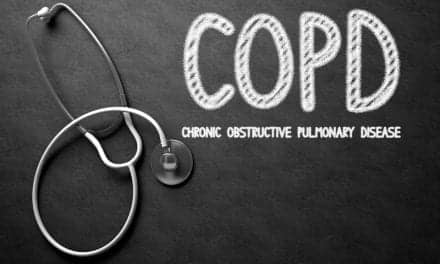Two studies presented at ATS 2018 demonstrate that combining home noninvasive ventilation with home oxygen therapy is more cost effective for patients with COPD and reduces risks of mortality and hospital readmission, according to press releases from ResMed and Philips.
The Home Oxygen Therapy – Home Mechanical Ventilation (HOT-HMV) health economic studies build on earlier data demonstrating the clinical and cost effectiveness of HOT-HMV therapy compared to treating with oxygen alone.
The UK study found that HOT-HMV treatment reduced exacerbation frequency and 28-day hospital readmission.
The US analysis found a 58.3% reduction in 30-day readmissions for HOT-HMV patients compared to those on home oxygen alone – and that HOT-HMV can actually save patients money while improving their quality of life.
“Patients who suffer from COPD and face frequent hospitalization due to their disease previously had limited treatment and care options available to them,” said Dr. Nicholas Hart, professor and clinical director of Lane Fox Respiratory Service, St Thomas’ Hospital in London. “We’re all searching for healthcare solutions that improve patient outcomes, but are also economically feasible – and scalable. For that reason, it’s exciting to see data showing we can achieve both of these through a combination of therapies.”
This economic analysis was based on patient-level medical resource utilization (MRU) from the intention-to-treat analysis of an open-label parallel-group randomized clinical trial. Patients with a hospital admission due to an exacerbation of COPD requiring acute home mechanical ventilation (also known as NIV) with persistent hypercapnia 2-4 weeks after resolution of respiratory acidosis were enrolled.
Patients in the control arm were permitted to have NIV added to home oxygen therapy if the primary end-point (hospital readmission) was met and if pre-set safety criteria were breached (for example, persistent acidosis and inability to wean from NIV). The MRU analysis included patient-level evaluation of equipment (oxygen concentrator and NIV device, including maintenance and support), patient-reported medication, physician office visits, and hospital readmissions due to exacerbations. Trial data was used to develop an economic model from the UK National Health Service perspective. Costs were calculated by multiplying observed MRU by standard unit costs (2017£) and summed at the patient level. Quality-adjusted life years (QALYs) were measured based on patient health utilities calculated with UK coefficients and EuroQOL-5D data from the trial. One-way sensitivity analyses and a bootstrap analysis with 1,000 iterations were conducted.
The US analysis was based on the UK study. Trial data was used to develop an economic model from the US payer perspective. Costs were calculated by multiplying observed MRU by standard unit costs (2017$) and summed at the patient level. QALYs were measured based on patient health utilities calculated with US coefficients and EuroQOL-5D data from the trial. One-way sensitivity analyses and a bootstrap analysis with 1,000 iterations were conducted. Base-case incremental cost/QALYs gained was negative $50,856.
“COPD greatly impacts patients’ quality of life due to the high potential for hospital admissions and disease burden, which results in increasing healthcare costs,” said Dr David White, chief medical officer, Philips. “These findings support the use of oxygen paired with noninvasive ventilation in the home to improve the patient experience and pave the way for more cost effective care.”
ResMed chief medical officer Carlos M. Nunez, MD, added: “It’s common for a procedure or therapy to improve patient outcomes and quality of life, but it’s rare to have a significant clinical impact with such a favorable economic impact as well, as HOT-HMV does. This finding is very positive news for people living with COPD who could benefit from HOT-HMV. The cost-saving potential is one more factor for encouraging wider use of this therapy option.”











True. I was in hospital 4 or 5 times a year before i got my niv (had a bipap before that) i have not been in hospital since i got the niv over a year ago